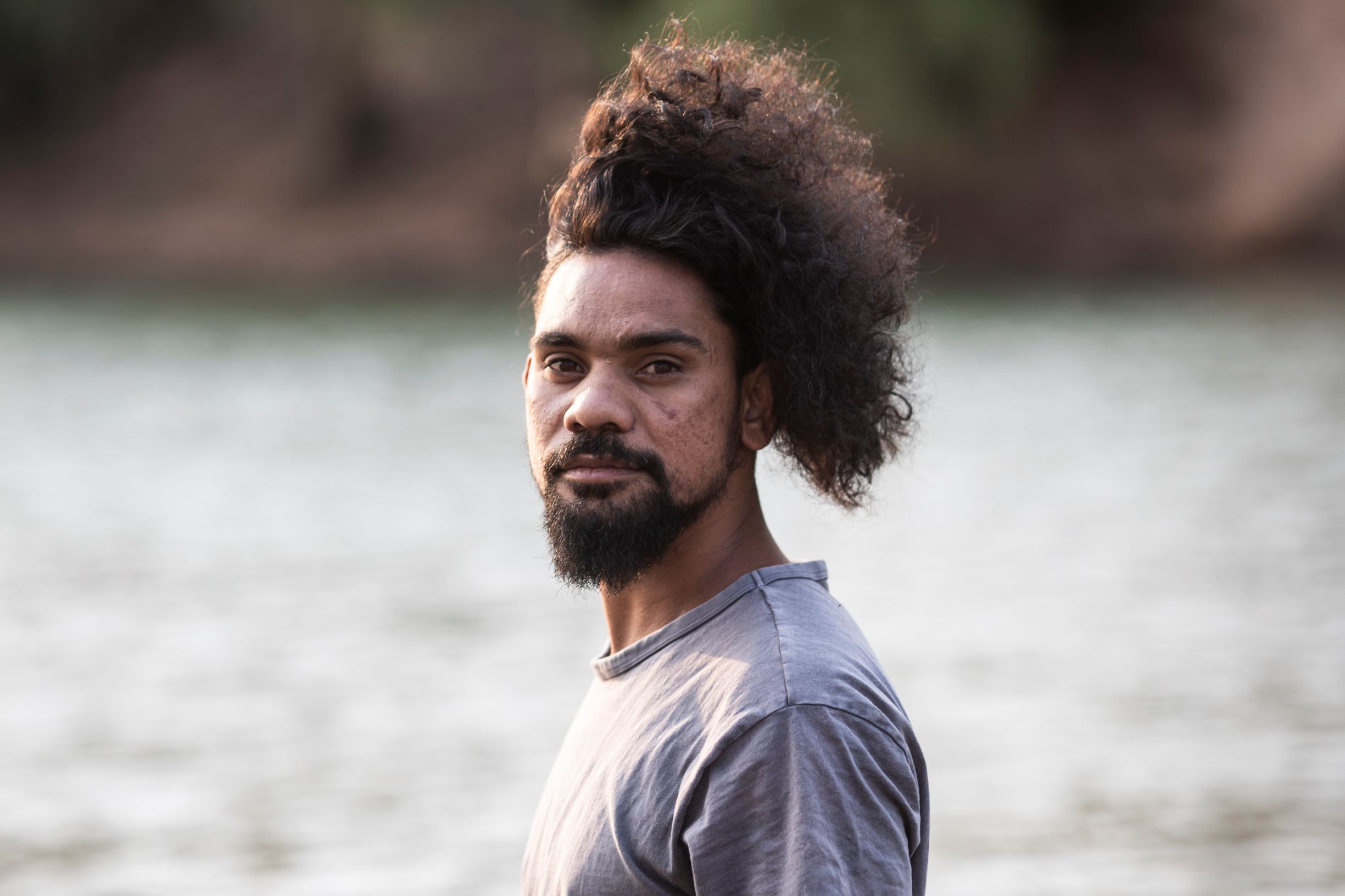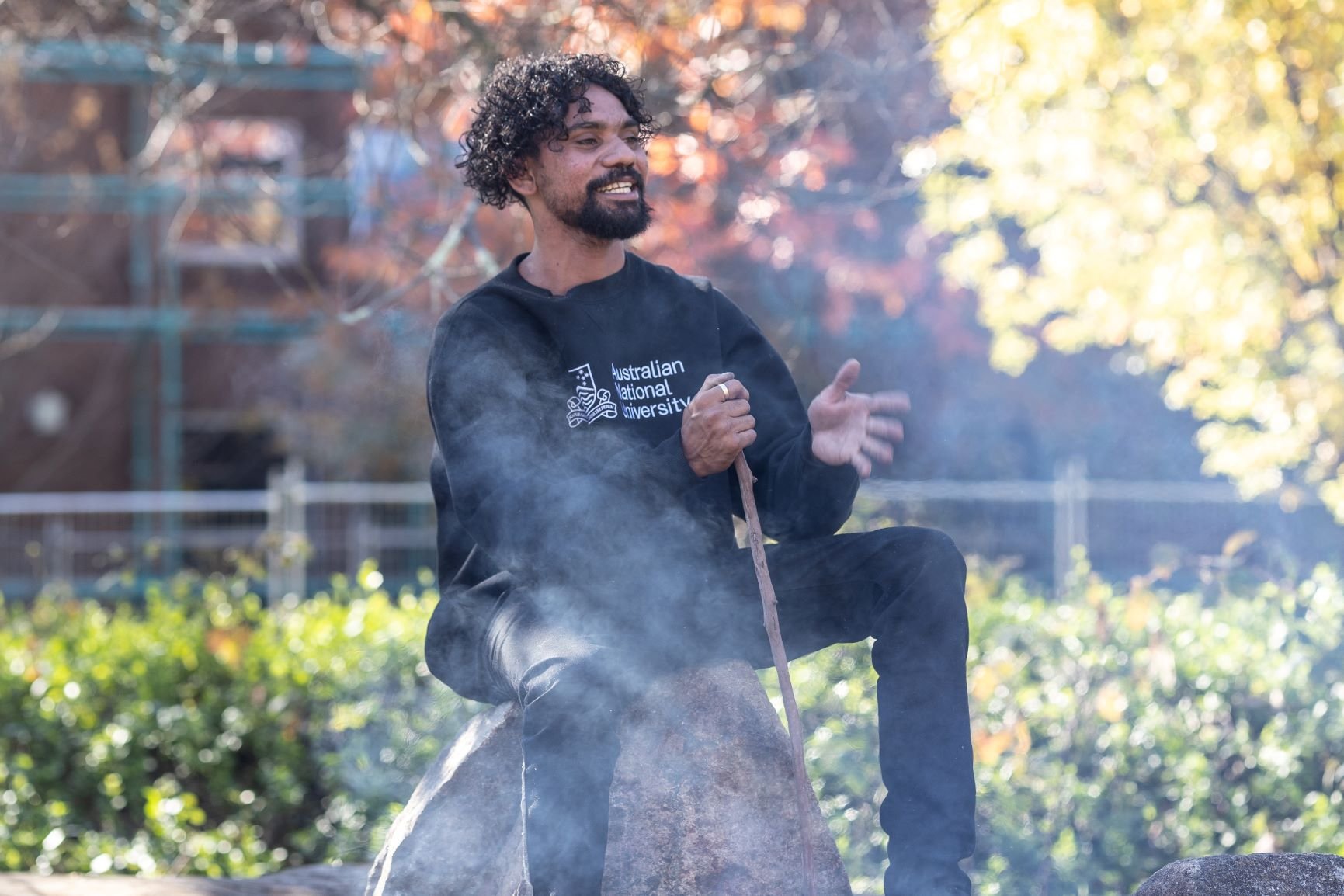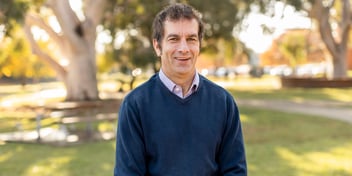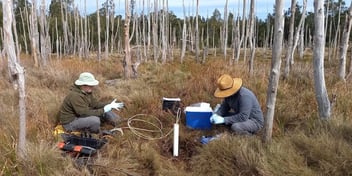New documentary explores one artist’s connection to river and Country

Following a year-long cultural residency at the ANU Institute for Water Futures (IWF), Hozaus Claire – a Bunuba/Gooniyandi man, young community leader and artist from the Kimberly – has produced a documentary about his connection to the Martuwarra river and Country.
Hozaus works with the Martuwarra Fitzroy River Council and Nulungu Institute of Research (University of Notre Dame) as a Martuwarra River Keeper Community Researcher. As a River Keeper, Hozaus applies his creativity to communicate why the Martuwarra is deserving of love, protection and promotion.
The ANU IWF cultural residency program aims to promote conversation and learning around Indigenous perspectives on water and Country, drawing on the process of creating art to foster cross-cultural understanding of Indigenous peoples and cultures.
Hozaus recently shared his documentary – Believing to See: The Martuwarra Fitzroy River – for the first time at the Australian Water Association’s Connected by Water conference in Perth.
“It was a good turnout, there was a big audience. It was my first audience, as well, in terms of showcasing my documentary. I didn’t talk much, I wanted the documentary to talk for itself,” he said.
“The documentary explains the residency, the resources I have been using and the people I have worked with. It explores climate and water issues, but it is also about my home.”
Hozaus said he got involved with the cultural residency through his work with the Martuwarra Fitzroy River Council.
“I have done a lot of traveling and work with the Council, sitting alongside my Elders and speaking up for the river and Country. I’ve been building my knowledge and experience in speaking for land,” he said.
“Professor Anne Poelina supported me with my application for the residency. Anne encouraged me down this path and told me that, if I did get the residency, I would bring something new and good to the table.
“The residency was a good experience and still is. I learned that there are different ways for me to apply my talents and skills. Not just through my art, but in building networks and getting involved in different sorts of media,” he said.
Connected to Country
Growing up in Fitzroy Crossing, the Martuwarra has always been central to Hozaus’ life. Since childhood, he lived alongside his Elders’ stories of the river. As well as teaching him to paint, Hozaus’ grandfather instilled in him the idea that the river must be revered and protected.
“My inspiration for the documentary was my connection to Country. I moved away from home for a while. But every time I go back, I always end up falling into the river. We go fishing and swimming as a family. The river has been with me since I was a child,” Hozaus said.
“Everytime I go back, it’s not the town that feels like home, it’s when I go on Country with my family and reconnect to the community. My inspiration was thinking about the river and how much of a resource it is to my people.
“At the same time, I had started the residency at ANU and I was doing work with the Council as a River Keeper and doing all this work around water.
“I realised that if I wanted to tell my story about water, the only story I could tell is the story I already know. And that’s my life's experience living on the land and understanding the river as my teacher.”
Hozaus said he started thinking about new ways to tell his story about the river and connection to Country, and decided to make a short documentary.
“I spoke with Anne Poelina again about my idea and she was very supportive. She told me to go for it, that my story couldn’t be wrong, no matter how I told it. I took that advice and moved ahead with making the documentary,” he said.
“Sammy Hawker [Canberra-based filmmaker and do-director of the documentary] came to Fitzroy Crossing to see my Country and see how we live with the river. It was just me, my idea and Sammy. I had a vision of what it would look like and what sort of story I would tell.”
Living with the river
As part of his cultural residency, Hozaus travelled to Canberra multiple times, where he worked on a large canvas depicting the Martuwarra, and took part in several activities with the IWF community, including a fireside yarn and river walk.
“When I first started the residency, I was working on a painting. It was a very similar story to the one I explore in the documentary, just on canvas,” he said.
“The residency supplied all the materials I needed to paint before I had the idea to make the documentary. But the story started on canvas. The Institute of Water Futures organised a studio through the ANU School of Art and Design, so I went there to do some painting, too. It was great.
“During the visit to Canberra when I was working on the painting, I had a really great handover. Both myself and the previous resident, Glenn Loughrey, did a speech and shared our stories and inspiration. I built up a big campfire and shared some stories. People came to listen and engage.
“I also got to visit the Murrumbidgee. We spent some time at the river. I brought my father to Canberra, so he could meet people I work with. Every trip was about building networks and learning from different people.”
In terms of what he hopes to communicate with the documentary, Hozaus said the work aims to express the deep connection his community has with the Martuwarra, and the importance of the river to the health of people and Country.
“Everybody will see the documentary differently. I would like it to speak for itself. At the same time, I’d like people to get a sense of what it’s like to live with the river. And how much of an impact the river has on our communities,” he said.
“The documentary also showcases how independent Indigenous people are – it shows how we see, feel and live with the river. It’s about more than the water, it’s what we do with the water and how we use it.
“A lot of people in our communities struggle, but the river is something we’ve always got. It supports us mentally, physically and emotionally.
“But, overall, I want people to learn about what is happening to this river, and why we are trying to protect it. The Martuwarra is actually one of the strongest flowing rivers in the world, it deserves protection.”
Hozaus Claire’s short documentary, Believing to See: The Martuwarra Fitzroy River, will be screened by the ANU in September.
The ANU Institute for Water Futures recently announced the 2024 cultural resident, Wiradjuri woman Jessika Spencer. Jessika is a Canberra-based artist whose practice includes fibre art, weaving and photography.
 All images: Sammy Hawker
All images: Sammy Hawker


